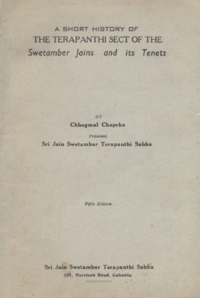- Jainism teaches us how to develop all souls into their full glorious state and in the meantime how to conduct ourselves so as to make this world happier and more contented. According to the Jains, all the evils of the world owe their origin to Rag and Dwesh (attachment and animosity). Animosity is apparently an evil to be discarded. But attachment also is as much to be discarded as animosity. Both are causes of bondage. Both pollute the mind. Whereas animosity causes injury to others, attachment causes undue preference to one's beloved beings or things (Jiva or Ajiva) and it may be called Moha (infatuation). This Rag or moh entangles the mind with the object of attachment and even the least separation causes affliction. Animosity is easily discernible, but it is difficult to conceive attachment as a cause of bondage. Worldly beings all over are suffering from the bondages of attachment and animosity, and Jainism teaches us how to get rid of these two principal causes of all evils. The Jain Scriptures lay down the paths to be followed by laymen and monks.
- There are those who give up all worldly connections and take to holy orders and try to speed up their march towards Mukti; they are known as Sadhus or monks. They take a life-long vow of absolute renunciation of worldly attachments. They do not injure any living being and do not countenance or cause injury to others even by thought, speech or action. They take five vows, which are the five great principles of non-injury, not to speak falsehood, not to steal, not to have sexual intercourse and not to own property. As this stage is not for ordinary householders, we do not here dilate much on this stage. We only want to impress upon the world at large that Jain Sadhus or ascetics are embodiments of what true renunciation is and how much privation and strictness they follow in observing the five great vows. They dedicate their lives to the uplift of not only their own soul, but for that of all laymen also. We would invite every true lover of old institutions and all seekers after truth to pay a visit to Jain Swetambar Terapanthi Sadhus and to find what discipline and what strictness they observe, what hardship they endure, what lofty character and what high morality they possess.
- For worldly beings, who cannot take to the holy order, i.e., for ordinary laymen also Jainism affords ample opportunities for the ennoblement of their soul. Not only does it show the path for each individual, but if the rules of conduct laid down for laymen are widely followed, this world becomes a better, a happier and a more contented place and there would be less of struggle for existence, of animosity, and less run for power. Contentment and peace are the guiding principles of these rules of conduct, which ere of a milder form than those enjoined for Sadhus. Non-injury to all living beings and reverence for the holy people are the principal factors which should guide all actions of all those desirous of attaining Mukti.
- Ahimsa or non-injury to all sentient beings is the foundation of Jainism and not only of Jainism, but of all ancient and modern religions. But Jainism alone tells us about the detail of what the sentient beings are. It does not interpret sentient beings in a limited sense. It defines sentient beings as not only all human beings, but also all animals and beasts, all living creatures, as also vegetable and mineral beings and even induces the visible and invisible beings consisting of air-life, water-life and fire-life. Jains declared long long before modern science could even imagine that air, water, lire, minerals and vegetables had life and consciousness, that living beings are of six kinds, viz., the one organned (fire, air, water earth and vegetables), two organned (worms etc; three organned (ants etc; four organned (mosquito, fly etc); and live organned (animals and human, hellish and divine beings). Jains declare that every other living being is as much susceptible to pain and pleasure as human beings are and as such it is the duty of every person not to hurt any of the sentient beings. As a layman cannot practise and observe the principle of non-injury in all its aspects towards all living beings the least that is expected of a true follower of Jainism or universal brother-hood is that he should not unprovoked and intentionally do such a things as would hurt or injure any innocent moving living being. This limited ideal only is put forth for a layman, because he is in a sense, circumscribed by the needs of his daily life. Yet this very narrow and simple form of non-injury if pursued with care and caution may lead to higher and higher development of his soul and may enable him to gradually enlarge his scope of practising non-injury in its fullest sense. True Ahimsa consists in refraining from killing, hurting or injuring. It does not consist in saving a life. To save the life of a sentient being is not the direct object of a person preaching Ahimsa. His sole aim is not to kill, hurt or injure. If by refraining from killing, he saves any animal, he does so not with the object of saving that animal but with the sole object of saving himself from the sin of an evil act. It is really kindness to one's own self.
A Short History Of The Terapanthi Sect Of The Swetamber Jains And Its Tenets: 5.3 The Tenets Explained [14-17]
Author:
 Chhogmal Choprha
Chhogmal Choprha
 Chhogmal Choprha
Chhogmal Choprha
Published: 28.09.2010
Updated: 02.07.2015
Updated: 02.07.2015
Sources
5th Edition, 1946
Publisher:
Sri Jain Swetambar Terapanthi Sabha, Calcutta, India

Publisher:
Sri Jain Swetambar Terapanthi Sabha, Calcutta, India

Page glossary
Some texts contain footnotes and glossary entries. To distinguish between them, the links have different colors.
Page statistics
This page has been viewed 1659 times.